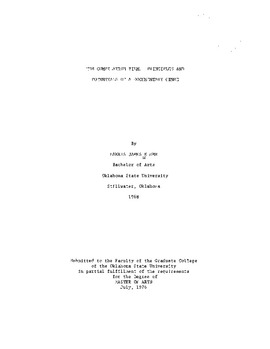| dc.contributor.advisor | Rollins, Peter | |
| dc.contributor.author | Elder, Harris James | |
| dc.date.accessioned | 2015-10-14T21:36:54Z | |
| dc.date.available | 2015-10-14T21:36:54Z | |
| dc.date.issued | 1976-07-01 | |
| dc.identifier.uri | https://hdl.handle.net/11244/19560 | |
| dc.description.abstract | My first exposure to compilation films was through television in the 1950's. To this day I recall my reaction to these exciting images, now conspicuous documents of the Cold War. Since then, the use of archival footage has increased--but not always with increased responsibility. The question of how a compilation can be assembled responsibly is one that must be asked by anyone who expects an intelligent response to films viewed. | |
| dc.format | application/pdf | |
| dc.language | en_US | |
| dc.publisher | Oklahoma State University | |
| dc.rights | Copyright is held by the author who has granted the Oklahoma State University Library the non-exclusive right to share this material in its institutional repository. Contact Digital Library Services at lib-dls@okstate.edu or 405-744-9161 for the permission policy on the use, reproduction or distribution of this material. | |
| dc.title | Compilation Film: Principles and Potentials of a Documentary Genre | |
| dc.type | text | |
| dc.contributor.committeeMember | Rohrberger, Mary | |
| dc.contributor.committeeMember | Berkeley, David S. | |
| osu.filename | Thesis-1976-E37c.pdf | |
| osu.accesstype | Open Access | |
| dc.description.department | English | |
| dc.type.genre | Thesis | |
